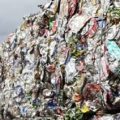In 2019, 20 million tonnes of post-consumer aluminium scrap were consumed worldwide. A record figure according to the recent report of the International Aluminium Institute (IAI). This is equivalent to 60% of total scrap consumption (and 20% of total world production) and has saved 300 million tonnes of greenhouse gas emissions.
Post-consumer is from used products reaching the end of their useful life and continues to exceed pre-consumer scrap levels since 1990.
Post-consumer scrap comes from three main sources: packaging, vehicles and construction. In total, recycled aluminium already represents more than one third of all aluminium produced in the world. But, the figures shown in the report reflect that it comes mainly from used packaging.
The study also notes that global demand for aluminium is expected to increase by 80% by 2050, due to a rapidly growing population and economy, and the growth and drive for sustainable solutions for a low-carbon society. “This demand could meet a 50/50 balance of recycled and primary metal, based on 2019 collection rates for end-of-life products.”
IAI Director of Scenarios and Forecasts Marlen Bertram says, “With ambitious collection targets for used beverage cans and improved foil recycling technologies, this rate could be even higher. Historical figures indicate that measures to increase the amount of post-consumer aluminium products that are reused in production processes continue to be successful”.













